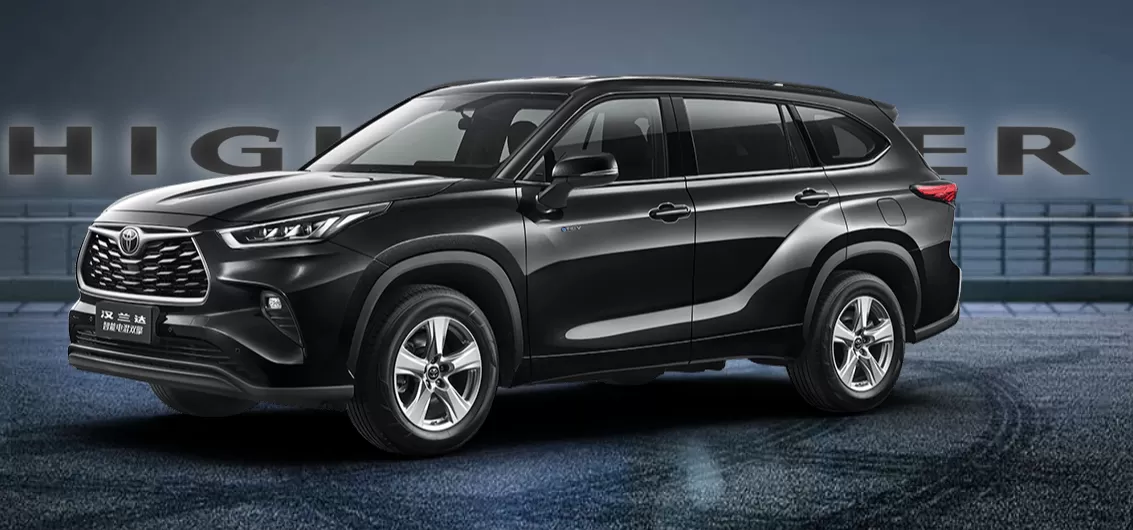1. Body colour
1.1Platinum Pearl White

1.2starburst red

1.3sapphire blue

1.4Ink Crystal Black

1.5Opal Silver

2. Appearance
2.1Strength and beauty in one

2.2 Grand Appearance

2.3 20-inch high-gloss aluminium wheels

2.4 Array LED headlamps
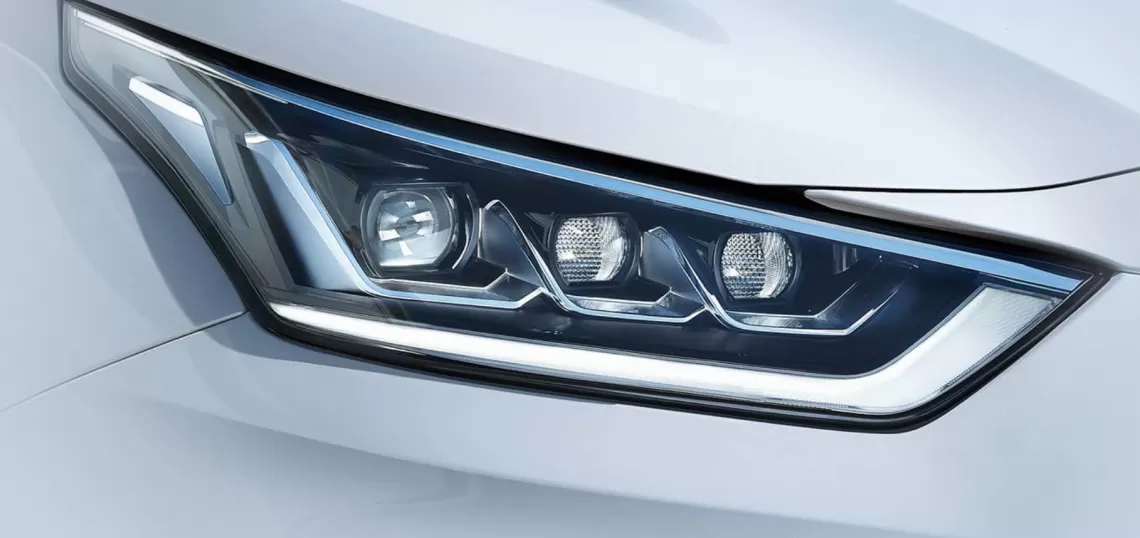
3. Luxury interiors
3.1 Luxury interiors
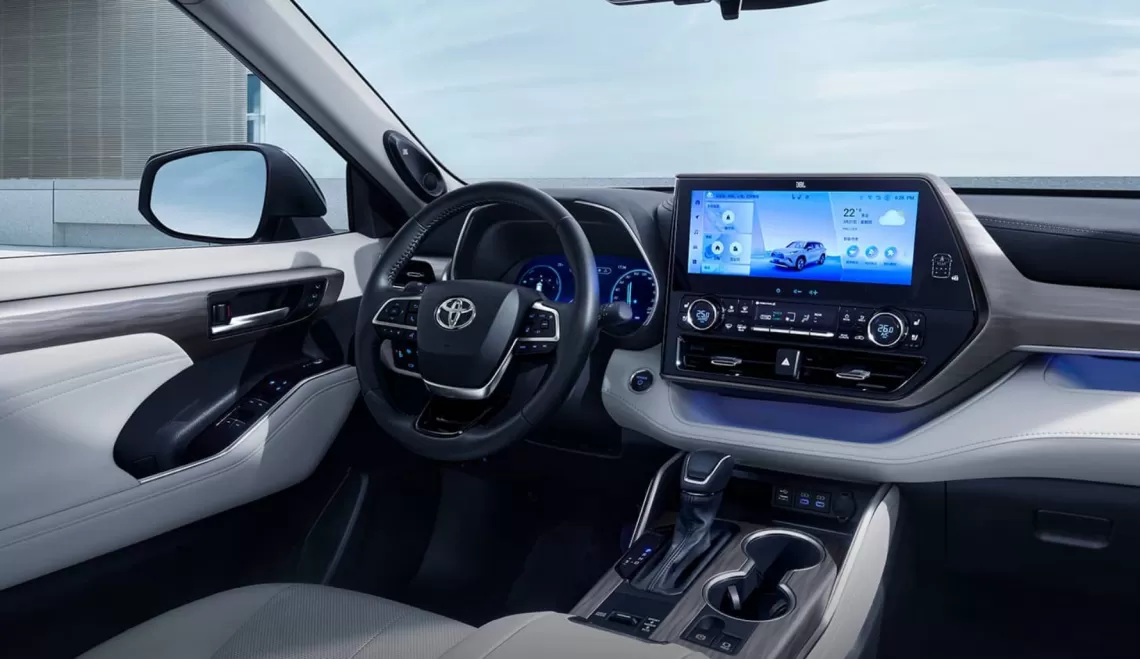
3.2 Segmented panoramic sunroof

3.3 HUD head-up display system

3.4 Rear power adjustable passenger seat
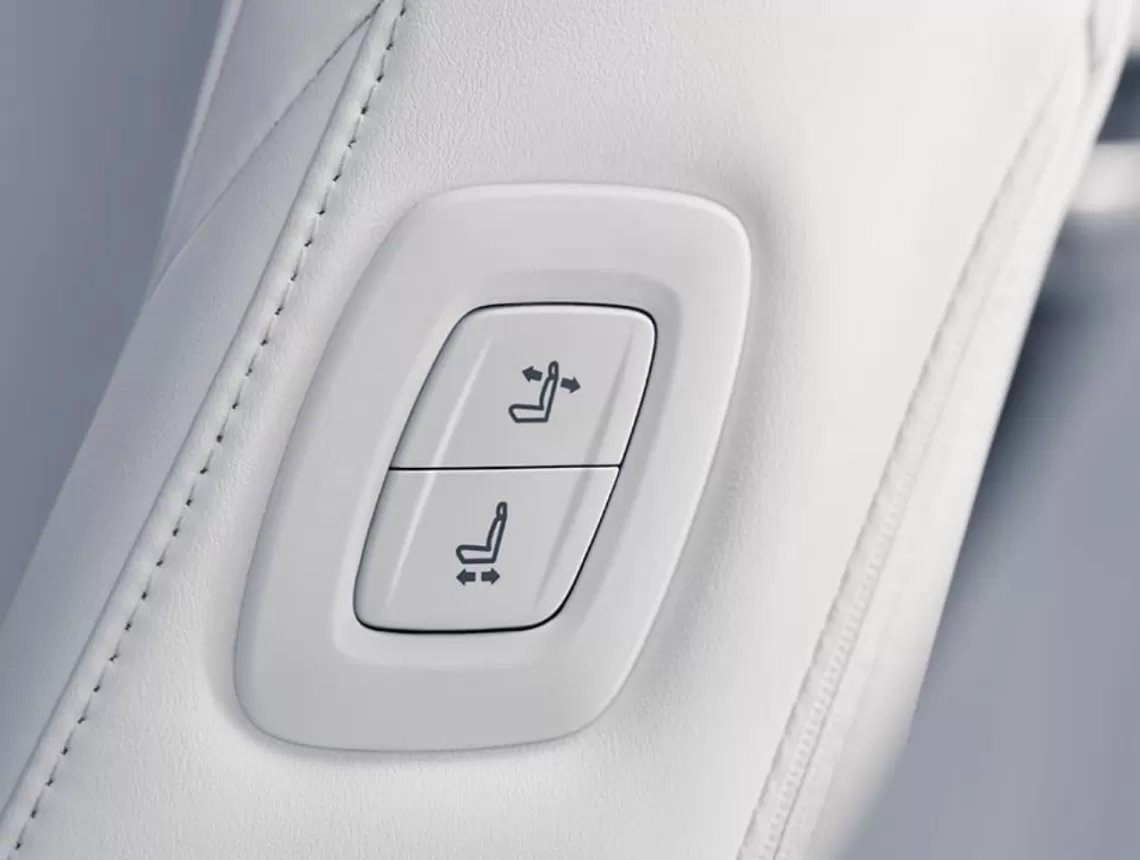
3.5 nanoe™X Air purification systems

3.6 Premium Surround Sound System

3.7 Heated second row seats

3.8 Seats

3.9 Second and third rows of seats split 4/6

3.10 Multi-storage space
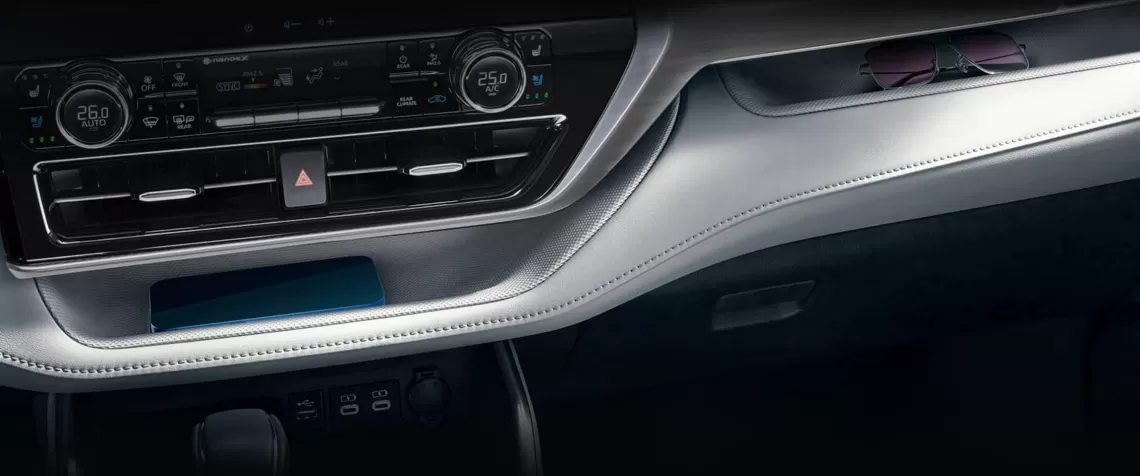
4. Power Handling
4.1 Intelligent Electric Hybrid Twin Engine
4.1.1

HEV System
THS Ⅱ4th Generation Hybrid System (2.5L)
Equipped with two powertrain components, the motor and engine, it delivers superior power performance. The motor recovers energy to achieve a high degree of integration of high fuel economy and environmental friendliness, bringing a different kind of driving pleasure.
WLTC Combined Conditional Fuel Consumption 5.82L100km (2.5L Intelligent Electric Hybrid Twin-engine 2WD)*3
WLTC Combined Conditional Fuel Consumption 5.97U100km (2.5L Intelligent Electric Hybrid Twin-engine 4WD)*3
Engine
2.5L Dynamic Force Engine
Adopting a large number of new technologies such as VVT-iE Intelligent Electric Variable Valve Timing Intake System, Dual Injection Fuel Supply System (D-4S Direct Injection + Intake Manifold Injection) and laser-melted valve seats, the Dynamic Force engine achieves a high degree of integration of superior power performance, high fuel economy and environmental friendliness.
Maximum power:139kW6000rpm3Maximum torque:236Nm/4200~4700rpm*3
Transmission system
E-CVT Electronic Continuously Variable Transmission System
Through excellent co-ordination, it achieves rapid power output, allowing you to enjoy a smooth ride as well as the pleasure of different driving modes.
4.1.2

E-FOUR Electronic Four-Wheel Drive (available on Intelligent Electric Hybrid Twin Engine 4WD models)
E-FOUR combines intelligence, power, and precision to achieve excellent steering performance. When accelerating the vehicle and driving on slippery roads in rain or snow, the system smoothly switches to 4WD, increasing the torque distribution ratio of the rear wheels (front and rear drive torque 100:0~20:80) to achieve more precise control. When the vehicle is steering, the system accurately grasps the driver's intention to operate and improves vehicle handling stability. It also improves the driver's peace of mind when climbing slopes in snowfall and heavy snowfall. Drive torque distribution can be viewed on the Multi-function Information Display. Unlike the structure and performance of mechanical four-wheel drive, the E-FOUR electronic four-wheel drive system can combine driving conditions and road conditions to determine whether four-wheel drive is required in real time, helping to reduce power loss and fuel consumption.
4.1.3
AIM 4WD Integrated Management System (for 4WD models)
Integrated management to enhance 4WD performance
Integrated control of drive, 4WD, braking, and steering functions.
Based on the TRAIL mode and Drive mode, it achieves superior handling stability, rough road passability, and driving comfort depending on the road surface and driving conditions.
TRAIL Mode, available on Intelligent Hybrid models)
One-touch extrication
When the idling wheels are braked, the driving torque is applied to the reversing wheels, effectively distributing the driving torque to the wheels in contact with the ground, thus enabling smooth extrication from rough road surfaces.When TRAIL Mode is selected, it can be viewed on the Multi-function Information Display, which can be accessed via the Multi-function Information Display.
4.2 380T
4.2.1 380 Power
2.0L Turbo Dynamic Force engine
Achievement of both powerful and agile dynamics and fuel economy
Adopting the‘D-4ST’that achieves high combustion efficiency with a central direct injection system and a high-efficiency twin-scroll turbocharger, as well as a variable cooling system that enables precise control according to driving conditions. The D-4ST is designed to achieve a powerful and agile driving dynamics with high torque while taking into account superior environmental friendliness and fuel economy.
Maximum Power: 182kW/6000rpm*3; Maximum Torque: 380Nm/1800-4000rpm*3
Direct Shift-8AT transmission
Easy acceleration from the start and at high speeds
In order to combine a pleasant driving experience with low fuel consumption, Direct Shift-8AT is used to achieve the responsive and powerful driving from the low RPM region that is characteristic of turbocharging. In addition, the system anticipates changing road conditions and the driver's intention in advance, and selects the engine output and gear control appropriately in relation to the driving environment, achieving low fuel consumption and high quietness when driving steadily. When the driver wants to control the car independently, he can choose to drive in a lower gear, providing the driver with a different driving pleasure.
4.2.24WD System

Dynamic Torque Vectoring 4WD System (available on 380T powertrain)
A four-wheel drive system that combines superior drivability, handling stability, and fuel economy.
The system employs a torque vectoring mechanism and a disconnect mechanism. In addition to controlling the front and rear drive torque distribution according to the driving conditions, the‘Torque Vectoring Mechanism’can also independently control the drive torque distribution between the left and right rear wheels, improving the vehicle's steering and off-road performance. The‘Disconnect Mechanism’uses a claw clutch to disconnect the power transmitted to the rear-wheel drive system during stable front-wheel drive driving, significantly reducing power loss and improving fuel efficiency. When four-wheel drive is required, it quickly connects and switches to four-wheel drive mode.
4.2.3Independent Rear Suspension

Dual Arm Independent Rear Suspension (equipped on all models)
Effectively captures road surface ups and downs, improving stability and cornering responsiveness.
Specialised shock absorbers reduce body vibration for a more comfortable ride.
4.2.4All-new chassis (available on all models)

Optimised layout improves vehicle stability and creates a different kind of driving experience.
The low centre of gravity design reduces bumps and creates a comfortable ride. Adopts a more dynamic design for a stable high-speed driving experience.
5. Toyota Pilot Advanced Intelligent Driving
5.1 PCS
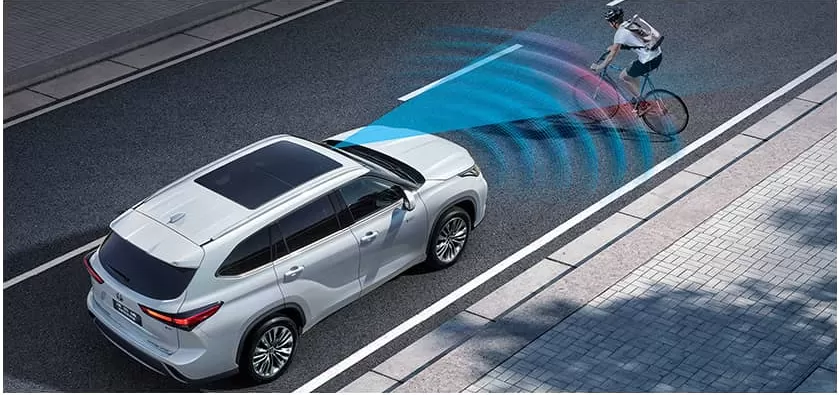
PCS Pre-Collision Safety System
(with Forward Pedestrian Recognition)*4
Detects vehicles, pedestrians (day and night) or bicyclists (daytime) in front of you via millimetre-wave radar and monocular camera, and informs of the possibility of a collision via the siren and the multi-function information display. Pre-collision brake assist is activated when the brake pedal is depressed, and if the brake pedal is not depressed, pre-collision braking is automatically activated, effectively preventing a collision or mitigating damage. For pedestrians and cyclists, the system is activated in the speed range of approximately 10-80kmh for the own vehicle. For example, if there is a speed difference of approximately 40kmh between your own vehicle and a bicyclist, the system activates to assist the driver in effectively avoiding a collision or mitigating injuries. For both advancing and stopped vehicles, the system will activate when the speed of the own vehicle is approximately 10kmh or more. For example, the system is activated at a speed of approximately 50kmb relative to the stopped vehicle to assist the driver in effectively avoiding a collision or mitigating injuries. In addition, the system can assist in deceleration in the event of a collision with a vehicle travelling in the opposite direction. Vehicles equipped with the HUD head-up display system can be synchronised through the HUD head-up display system.
When the system determines that the likelihood of a collision with a pedestrian, bicyclist or vehicle is high and there is sufficient space within the self lane to avoid, and the driver operates the steering wheel to avoid the collision, the system provides steering assistance to ensure the stability of the vehicle and to assist in suppressing lane departure. This function will not function when the system determines that there is not enough space in the self lane to avoid, or there is an object in front of the avoidance.
When turning left at an intersection and there is a vehicle travelling straight ahead in the opposite direction, or when turning left at an intersection and there is a vehicle travelling straight ahead in the opposite direction, or when turning left! right turn with a pedestrian crossing at a pedestrian crossing, it is recognised by millimetre-wave radar and monocular camera, and the possibility of a collision is communicated through the siren as well as the multi-functional information display, activating the pre-collision braking, assisting in evasive manoeuvres and mitigating injuries.
5.2 DRCC
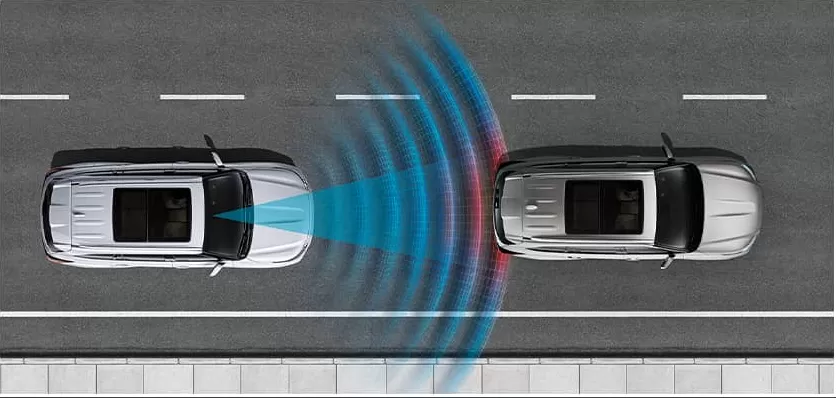
DRCC Dynamic Radar Cruise Control
(with full speed domain following function)*5
Recognises the vehicle in front of you by means of the Taimi Wave Radar and Monocular Camera, and maintains a following distance corresponding to the vehicle speed to assist in following the vehicle. When the vehicle in front of you stops, it stops and remains stopped;
When the vehicle in front starts, the driver controls the start and follows the vehicle again. This reduces the burden on the driver in motorway driving situations. In addition, the cornering speed control function, when driving with Dynamic Radar Cruise Control activated, if the system determines that it is necessary, will control the speed at the start of the turn, and the display will indicate that the system is running.
5.3 LTA

LTA Lane Trace Assist*6
Provides partial steering support to keep the vehicle in the centre of the lane. Provides necessary steering support to follow the vehicle ahead of it when the white line (yellow line) of the road is not recognisable or cannot be recognised, such as in traffic jams. When a vehicle is about to cross the line, a beeping alarm and indication on the display assist with partial steering manoeuvres. Partial steering support is also provided not only for the white line, but also for the edge of the road, such as tarmac or kerbs, when it is determined that the line is about to be crossed.
5.4 AHB

AHB Automatic High Beam Adjustment System
Automatically switches between high beam and low beam to help drivers spot other vehicles as quickly as possible when driving at night. Reduces the tediousness of manual operation in case the driver forgets to operate.
5.5 RCTA

RCTA Reverse Side Rear Blind Spot Alert System*
When the vehicle is reversing, it relies on radar to detect whether there is a vehicle approaching from the left or right side and can alert the driver through the indicator light and buzzer on the outside rear view mirror. When the system detects the risk of collision, it automatically brakes to reduce the impact damage with the approaching vehicle.
5.6 PKSB

PKSB Parking assist braking function (stationary object + vehicle)*
This system mitigates damage by softening shocks caused by mistakenly pressing the accelerator pedal or over-pressing. When it detects an approaching stationary object in situations such as reversing into a garage, it will sound an alarm through the on-screen display and buzzer, control the output power at the time of starting, and if the distance still continues to narrow, it will automatically apply the brakes to mitigate damage.
5.7 VDIM

VDIM Integrated Body Dynamics Management System
Integrated control of engine, brake, steering and other functions to help the vehicle to maintain driving comfort even on slippery surfaces.
5.8 BSM

BSM Blind Spot Monitoring System*
Detects vehicles travelling in the side lanes via radar and alerts the driver via LED indicators in the exterior mirrors once it detects a vehicle behind the side that is difficult to identify in the blind spot.
5.9Streaming Inside Rearview Mirror

The image from the camera at the rear of the vehicle is displayed in high resolution on the display screen of the interior mirror, so that the driver's field of vision will not be blocked by headrests or luggage, and to assist the driver in smoothly confirming the road conditions behind him or her.
5.10 Additional safety features
ABS anti-lock braking system
(with EBD electronic brake force distribution system)
It can automatically distribute the braking force of the front and rear wheels according to the load of the vehicle and different road conditions to maintain the stability of the vehicle when braking on slippery roads or emergency braking.
HAC Hill Start Assist Control System
Effectively prevents skidding backwards by automatically controlling the brakes when starting uphill.
GOA Body
Developed to a high level of crash safety standards, the body is strengthened with high-strength steel and new processes to increase safety in a wide range of possible crash situations.
6. Toyota Pilot Smart Space
6.1 Smartphone Interaction
Remote air conditioning/door lock control
Fung Yun Hyatt Service
Negligence alerts (doors, windows, etc.)
Emergency/roadside assistance (with SRS airbag linkage)
Intelligent car search/vehicle condition enquiry (range, remaining fuel, etc.)
Digital key (opening and closing doors, keyless entry, sub key authorisation)
Maintenance reminders/vehicle health reports
Anti-theft alerts, theft tracking/remote start restrictions
6.2 Natural Voice Interaction

Supports dual-zone recognition
6.3 Intelligent in-vehicle systems

Qualcomm Snapdragon 8155 chip ten 12.3-inch smart car system
6.4 Owner's Super Account

App accounts, preference customisation, etc.


